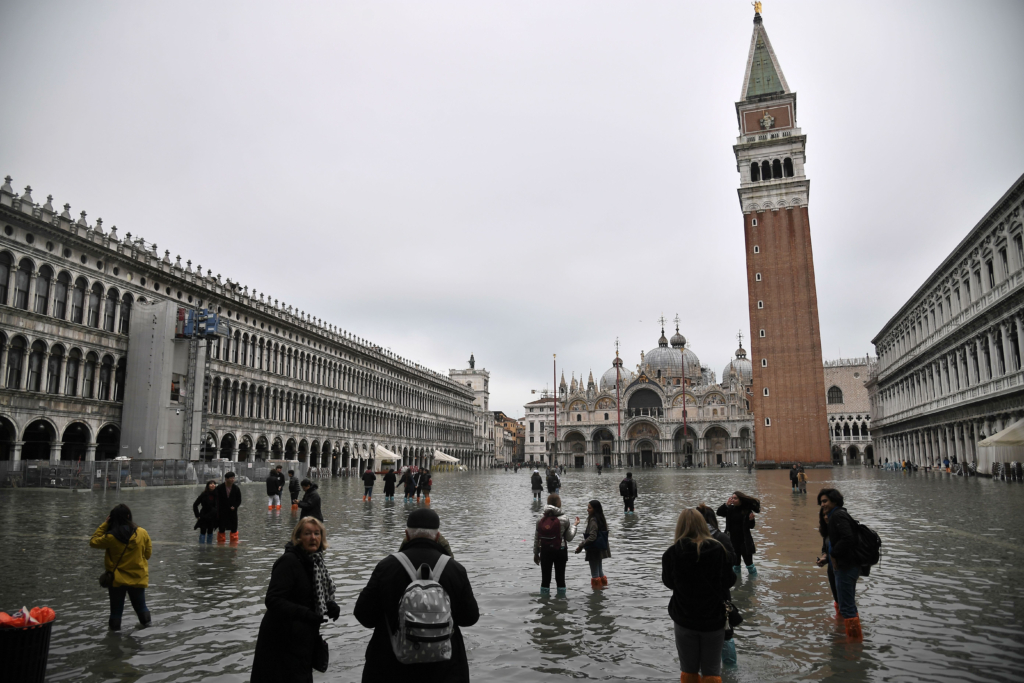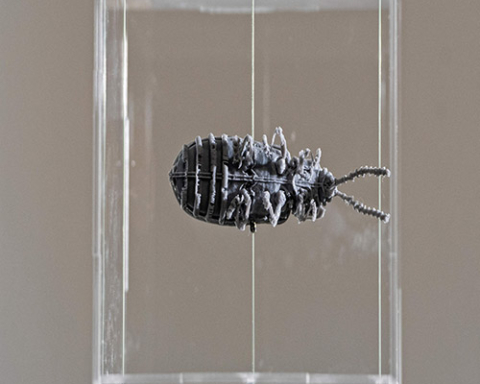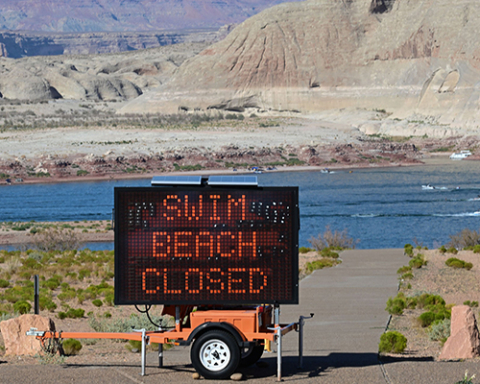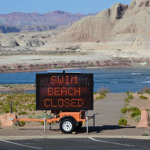ROME — Venice is “on its knees,” in the wake of the second-worst flooding of modern times, its mayor said Wednesday, describing an extreme weather event that left nearly 90% of the UNESCO World Heritage city under water.
“Venice is on its knees. St Mark’s Basilica has suffered major damage just like the entire city and its islands,” Mayor Luigi Brugnaro wrote on Twitter. “These are the effects of climate change.”
The high tide reached a peak height of 187 centimeters (more than 6 feet) at 10.50 p.m. (2150 GMT) on Tuesday, and rose again to around 150 centimeters at around 10.30 a.m. New peaks of 130-140 centimeters were forecast for Thursday-Friday.
Flooding starts when water rises above 90 centimeters. With floods of 150 centimeters, 70 per cent of the city goes under water; with floods of 190 centimeters, the percentage rises to 88.
This results in the wrecking of most shops, restaurants and ground floor apartments, as well as of churches, monuments and other street level spaces.
Venice, a city literally built on water, has always been prone to floods, but the Italian government has invested in a controversial anti-flooding dam that is not yet operational.
“We’ll lose Venice, that’s not controversial,” Anders Levermann of the Potsdam Institute for Climate Impact Research warned a year ago. However, “it can take centuries,” he added.
The slow but “unstoppable” threat from rising sea levels can be mitigated with appropriate measures, but these would have to be very large scale, the German expert said.
The so-called MOSE dam is designed to protect the city from floods from 110 centimeters up to three meters. The 5.5-billion-euro ($6 billion) project started in 2003 and is almost complete.
However, some doubt its effectiveness, claiming it is prone to rusting, while others say it damages the lagoon’s ecosystem. It might also restrict cargo traffic from Venice’s busy industrial port.
Furthermore, a few years ago it was revealed that public officials were bribed to approve the project, triggering a major corruption scandal that halted construction work.
Brugnaro said there could be no more dithering on anti-flooding measures. He said the so-far losing battle to halt Venice’s depopulation depended on this.
“We have to believe in this ourselves, we cannot be taking lessons from the Americans, French or English who come here to give us advice,” the mayor said in a press conference.
In its first response to the calamity, the Italian government pledged to have the MOSE completed “as soon as possible.” It was also expected to declare a state of emergency and approve emergency funds.
Prime Minister Giuseppe Conte was scheduled to arrive in Venice later Wednesday to survey the damage. “We are definitely talking about hundreds of millions of euros,” Brugnaro said.
The bad weather, including strong winds, unmoored dozens of gondolas, boats and even ferries. Some vessels sank, some crashed against piers, and some could be seen drifting in the lagoon.
There was also a fire inside the Ca Pesaro museum on the Canal Grande, caused by a short circuit in a switch cabinet, the ANSA news agency said.
In Pellestrina, an island separating the southern Venetian Lagoon and the Adriatic Sea, two men died: one from electrocution and another from suspected natural causes.
“We are facing total and apocalyptic devastation … with unimaginable, scary damage,” Veneto Region President Luca Zaia told the Canale 5 TV station.
Schools were closed on Wednesday, but public transport ferries resumed their service. Brugnaro and other public officials were due to hold a press conference at noon.
The worst flooding in modern times for Venice was a 194-centimeter high tide in November 1966, when floods also devastated much of Florence.
The disaster raised worldwide concern about Venice, and led, among other things, to the foundation of the Venice in Peril Fund, a British charity.
Story by By Alvise Armellini (TNS)


















